Riding uphill is one of the biggest challenges in cycling. It can be a struggle, sapping strength and speed. Unfortunately, there’s no silver bullet to get up climbs easier, but there are some tips you can follow to make riding uphill more comfortable.
Check out the 8 top tips below.
This post might contain affiliate links for which we may make a small commission at no extra cost to you should you make a purchase. Learn more.
The heavier you are, the harder every climb will be. It’s no surprise that elite climbers on the professional tour are all lightweight. The better your power to weight ratio is, the easier the climb will be.
Losing a few pounds is a quick way to make climbing a lot easier – and you’ll get the additional health and fitness benefits too.
Unfortunately, biking uphill only really becomes easier if you do it regularly. The more hills you climb, the less tired you’ll get. Make sure you incorporate hilly routes into your training and embrace them.
Don’t avoid hills and stick to flat surfaces as you’ll struggle when the terrain kicks up. Hilly rides are the best way to prepare for climbing. If you live in a flat area, indoor trainers do a good job with mimicking hills.
Choosing the wrong gear on a climb is a sure-fire way to burn out. If you are in a gear that’s too big, you’ll find your energy draining quicker and your efficiency will drop. In fact, you’ll end up being slower too.
The more gears you have, the easier the climbing will be. If in doubt, opt for a lower gear (your easiest cog) and then you can always change up a gear if need be.
It’s tempting to really attack climbs and get up them as fast as possible, but you’ll end up tiring yourself out a lot quicker. Pacing is really important to effective cycling uphill.
Don’t fall into the trap of racing up the hill straight away, settling in and finding the right gear will lead to a more enjoyable ride.
Regardless of cycling on hills or flat terrain, fueling is vital. If you want to have more energy for getting up climbs, make sure you have food beforehand and you are well hydrated.
Poor fueling quickly leads to low energy and tiredness. If you need a quick boost before a hill, energy gels are popular nutritional products cyclists use for an instant energy hit.
If you feel like you are wasting a lot of energy on climbs, think about your cycling technique. If you are moving around in the saddle too much, you’ll be wasting energy.
Likewise, using your gears optimally is important for efficient cycling uphill. Some small tweaks can help conserve your energy levels and reduce tiredness.
If you’ve ridden in a group before, you’ll already know the benefits of ‘drafting’. Have a look at professional races and you’ll see the main peloton cycling in a big group to conserve energy.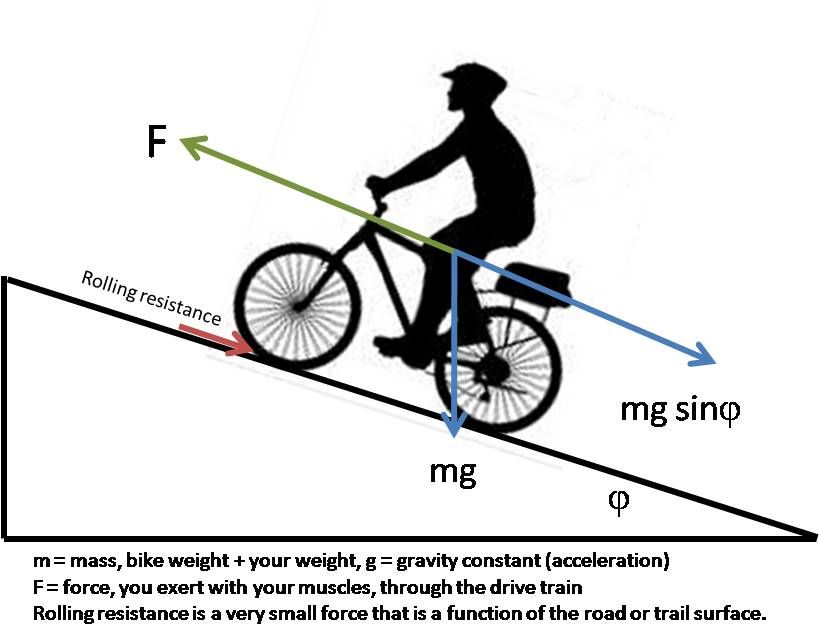
Cycling with other people means you can sit in behind someone else and receive an aerodynamic boost. This is especially important if there is a headwind. Sitting in behind another rider, known as drafting, results in between a 10-30% energy saving.
Obviously, if you are the lead rider, you’ll be doing more of the hard work. Riding in a group is a really effective way to save energy while maintaining speed. Just make sure you are confident with group riding before getting too close to another rider’s back wheel.
It goes without saying that having the right bike, clothing and equipment makes cycling easier.
There are some quick things you can do to prepare for hills: Upgrade your wheels for lighter ones that perform better going uphill, make sure your bike is suitable for climbing, with a wide range of gear options, reduce weight on your bike by avoiding additional bags and so on, wear sweat wicking clothing to keep you cool when you are working hard, and make sure you’ve got water bottle cages for hydration.
If you are climbing during a sportive event or race, you can ditch some fluids and make the most of the feed stations instead. That’ll keep your overall weight on the bike lower.
Getting your preparation right will be a big game-changer for improving efficiencies and generally make cycling easier. Preparation also includes knowing the route. It helps with cycling uphill when you know when the climbs are coming.
You can then save energy beforehand, fuel at the right time, build up speed to help the start of the climb and so on. Mentally, as well, being prepared is an easy way to be ready for uphill climbs.
Finally, here are five summarizing common mistakes to avoid:
Remember, cycling uphill will only get easier if you do it more.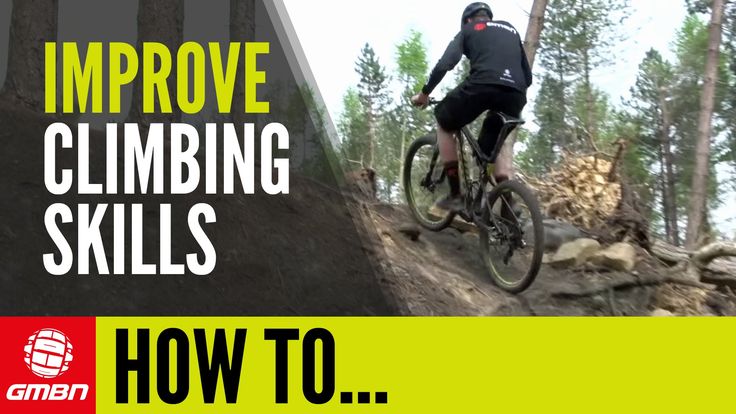 These tips will help with cycling efficiency and energy levels, but nothing can replicate hill training. The more you do it, the easier it will get.
These tips will help with cycling efficiency and energy levels, but nothing can replicate hill training. The more you do it, the easier it will get.
Images credit: Pixabay
Chris Smith
Founder of Vivi Nation, the cycling, running and active living brand. Chris is a sports enthusiast, occasional triathlete and experienced cyclist, having led multiple cycle tours across Europe.
Just imagine. It’s just you and your bike. You’re soaring down a winding road, surrounded by trees and amazing scenery. You can feel the wind rushing as you feel like you’re flying down the pavement. It’s one of the best feelings as a cyclist!
7 Tips for Long Distance Mountain B...
Please enable JavaScript
7 Tips for Long Distance Mountain Bike Trekking and Touring #short #shorts #shortvideo
Riding downhill is fun, but have you ever heard the saying, “what goes up must come down?” Well… I think you see where I’m going with this! If you’re wanting to experience the splendor that is riding downhill on a road bike, you’ve got to get to the top of the hill, and that is going to take some hard work!
Contents
Just because something is hard work, doesn’t mean that it can’t be fun! We’re going to be looking at how to bike uphill without getting tired because once you put in the effort to make it to the top, it makes the downhill that much sweeter!
With these top 10 tips to kill it on your uphill climb, we’re going to be looking at all aspects of biking! From adjustments to your bike to your form and your mind, there are all kinds of ways of how to bike uphill without getting tired and burnt out!
By now, you’ve probably heard of Carol Dweck’s term “growth mindset” for learning new things and doing hard things. Having a growth mindset means that you believe in yourself. You believe you can improve. You believe that if you work hard enough, you can achieve anything. Opposite to that, she also addresses a fixed mindset, which is where you believe your talents and abilities can’t change.
Having a growth mindset means that you believe in yourself. You believe you can improve. You believe that if you work hard enough, you can achieve anything. Opposite to that, she also addresses a fixed mindset, which is where you believe your talents and abilities can’t change.
Believe it or not, if you want to know how to bike uphill without getting tired, you’ve got to start with your mindset. You’ve got to have that growth mindset and believe that with the right amount of practice and effort, you will do it!
Dr. Dweck has documented that athletes with fixed mindsets will avoid tough challenges and often give up if they don’t feel they will be successful. So, start your journey with the right frame of mind, and you will already be on your way to succeeding and reaching your goals!
As you’re preparing your mindset, you are also going to need to prepare yourself that this journey will not be easy. If you’re training to cycle up big hills, you’re going to experience some aches and pains. Your muscles are going to be sore. It will tire your body. You might even get some scrapes and bruises along the way.
Your muscles are going to be sore. It will tire your body. You might even get some scrapes and bruises along the way.
While this isn’t ideal, it’s pretty much inevitable. You know the saying… “No pain, no gain,” right? Well, it’s kind of true. You’re going to need to push your body to its limits and if you’re willing to deal with it, you’ll be able to reach your goal!
If you think about it, it makes sense. The heavier you are, the harder it will be to support your body weight when biking up a big hill. While anyone can do it, if you are looking to make the ride easier and with less effort, you will want to shed any unwanted weight.
Luckily enough, a brilliant strategy to lose weight is to bike! Did you know that biking 20 miles a day can actually lead to weight loss by burning around 1000 calories?! So, how to bike uphill without getting tired? Dropping a few pounds is sure to help!
If you’re not looking to lose any weight, you can also adjust the weight of your bike to lighten your load. You could invest in a bike that is lighter weight altogether, or you could even look into replacing parts of your bike with lighter options. You could grade your wheels to lighter weight ones. Carrying less water and/or less heavy gear could make a difference, along with lightweight wicking clothing and not heavy cotton clothes. Essentially, carry only what you absolutely need on you!
You could invest in a bike that is lighter weight altogether, or you could even look into replacing parts of your bike with lighter options. You could grade your wheels to lighter weight ones. Carrying less water and/or less heavy gear could make a difference, along with lightweight wicking clothing and not heavy cotton clothes. Essentially, carry only what you absolutely need on you!
You know what they always say…. Practice makes perfect. Well, it applies here as well! One of the best ways to bike uphill without getting tired is to practice biking uphill over and over until the feat becomes easier! So… to bike uphill without getting tired, you’re going to have to attempt biking uphill multiple times while getting tired! It’ll pay off in the end!
But biking uphill isn’t the only way that you can train to make it easier! Cross-training increases your overall level of conditioning while conditioning the entire body!
So, throw in some Crossfit bootcamp workouts now and then, go for a run, go for a swim, and simply mix it up! You don’t want to overwork certain muscle groups or get your body too comfortable in a workout routine.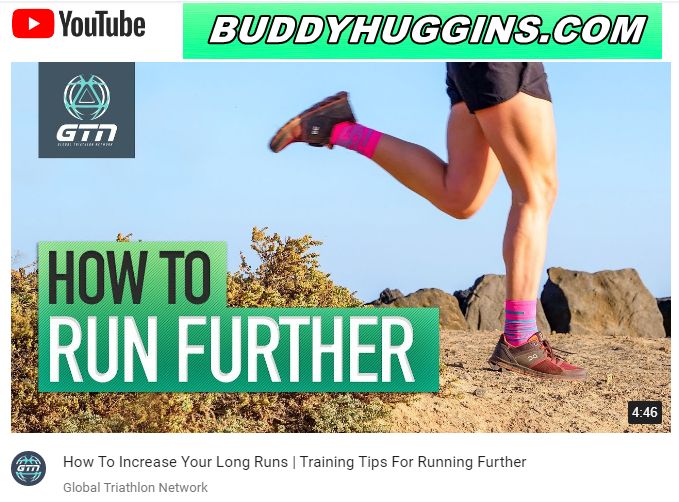 It’s great to train your whole body and switch up your workouts to keep yourself motivated and gaining strength. It’ll help you become prepared to face that treacherous hill with ease!
It’s great to train your whole body and switch up your workouts to keep yourself motivated and gaining strength. It’ll help you become prepared to face that treacherous hill with ease!
Believe it or not, your technique and riding position can play a huge role in how to bike uphill without getting tired. There are plenty of tips and tricks that will help ease the discomfort and difficulty of climbing that include…
Similarly to the advice above, when you are riding in the saddle, you are mostly using your legs whereas standing up is using your complete body. Many people think you should stand up because you’ll have more power, but again, you may just tire yourself out too quickly. While it will give you more power and push you up quicker, you need to save that energy boost for only when it is absolutely necessary. So, as you’re climbing a hill, make a goal to stay seated as long as possible.
Your hips and your chest should be slightly forward. Obviously not leaning over the handlebars, but don’t let yourself sink back or lean back. Keep the power moving forward.
As you get into the more intense parts of your climb, you may not notice, but your body will start tensing. Try to notice this and keep your body relaxed. Try not to grip the bar too tightly. Keep a loose, but solid grip and remember to keep breathing!
You may think that starting fast might build some momentum, but it actually may be better to start at a reasonable pace and stick with it. Think tortoise and the hare. If you start out exerting too much energy, you may get halfway up the hill and burn out.
Pace yourself and keep your cadence steady!
Using the right gears is crucial in learning how to bike uphill without getting tired. You should determine what bike gears to use by the steepness of the hills that you are climbing. However, as a general rule, you will want to stay on the lower side and start your climb in a lower gear than you may originally have thought.
However, as a general rule, you will want to stay on the lower side and start your climb in a lower gear than you may originally have thought.
You will also determine the right gear based on your fitness and experience level! More experienced riders may find themselves in higher gears, while newer riders who may be less fit may need to stay in lower gears for even longer! So, the best way to use the right gear is to get out there, try it for yourself, and see what feels best to you.
Hydration is key! If you aren’t properly hydrated, your fueling regimen won’t work! So, make sure that you have water on hand and stay hydrated throughout your ride.
Besides hydration, you may need some extra fuel depending on the length of your ride. According to some experts, eat a high-carbohydrate snack after 90 minutes of a ride. Then, fuel an extra 125 calories every hour after that initial 90 minutes.
If your uphill ride isn’t longer than the 90 minutes, you may not need a snack during your ride.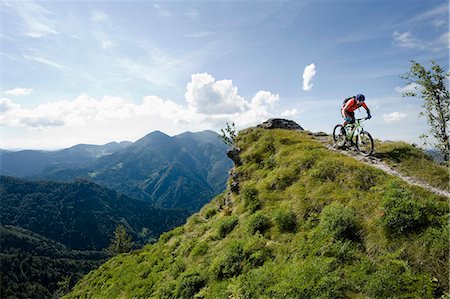 But make sure you fuel properly with a balanced pre-ride snack or meal. It will ensure that your body has the energy to take on this challenge!
But make sure you fuel properly with a balanced pre-ride snack or meal. It will ensure that your body has the energy to take on this challenge!
If you’ve ever competed in a race, whether it’s running, biking, or something in between, you may know of the magic that can take place when you surround yourself with others. While a ride alone may be nice and relaxing, you may need some accountability partners and people to encourage you along the way.
Find some people or a local riding group to join, and you will be amazed at how much of a difference it can make! It’s easy to focus on the pain and the difficulties of something when you are all alone. But it’s easier to be distracted, thinking and talking about other things when you are riding with friends.
You’re not always going to be able to cruise down hill in biking. Sooner or later you are going to have to go back up. Knowing how to bike uphill without getting tired is one of those important things you need to know if you like biking.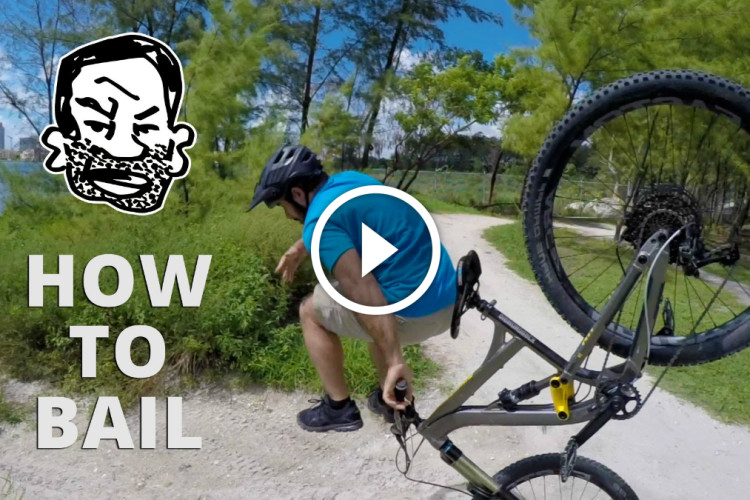 In this article, we covered 10 tips that will help you kill those big hills like you are a Tour De France cyclist! Enjoy!
In this article, we covered 10 tips that will help you kill those big hills like you are a Tour De France cyclist! Enjoy!
Preview
BEST CHOICE
BEST PRICE
Title
Hiland Road Bike 700c Racing Bike City Commuter Bicycle with 14 Speeds Drivetrain 55cm Black
Trinx TEMPO1.0 700C Road Bike Shimano 21 Speed Racing Bicycle (Black/Green)
EUROBIKE Road Bike, XC550 Bike,21 Speed Womens Road Bicycle,49Cm Frame Bikes for Men,Disc Brake 700C...
Schwinn Phocus 1600 Drop Bar Adult Road Bicycle, 58cm/Large Alluminum Step-Over Frame, Carbon Fiber...
Color
Black or White
Blue/White or Black/Green
Black and White
Black or Light Blue
Size
55 or 60cm
53 or 56cm
49 or 54cm
Speeds
Customer Rating
Details
CHECK LATEST PRICE
CHECK LATEST PRICE
CHECK LATEST PRICE
CHECK LATEST PRICE
Preview
Title
Hiland Road Bike 700c Racing Bike City Commuter Bicycle with 14 Speeds Drivetrain 55cm Black
Color
Black or White
Size
55 or 60cm
Speeds
Customer Rating
Details
CHECK LATEST PRICE
BEST CHOICE
Preview
Title
Trinx TEMPO1. 0 700C Road Bike Shimano 21 Speed Racing Bicycle (Black/Green)
0 700C Road Bike Shimano 21 Speed Racing Bicycle (Black/Green)
Color
Blue/White or Black/Green
Size
53 or 56cm
Speeds
Customer Rating
Details
CHECK LATEST PRICE
BEST PRICE
Preview
Title
EUROBIKE Road Bike, XC550 Bike,21 Speed Womens Road Bicycle,49Cm Frame Bikes for Men,Disc Brake 700C...
Color
Black and White
Size
49 or 54cm
Speeds
Customer Rating
Details
CHECK LATEST PRICE
Preview
Title
Schwinn Phocus 1600 Drop Bar Adult Road Bicycle, 58cm/Large Alluminum Step-Over Frame, Carbon Fiber...
Color
Black or Light Blue
Speeds
Customer Rating
Details
CHECK LATEST PRICE
Jessica Meacham
I’m a former college athlete turned marathon-running and outdoor exploring mom of two little ones. From hiking through Iceland to paddle boarding in Lake Tahoe, our family is always up for a fun adventure that incorporates fun and fitness!
Categories BikingPrevious
Next
Friends, today we will talk with you about climbing uphill, about how to play free when climbing uphill.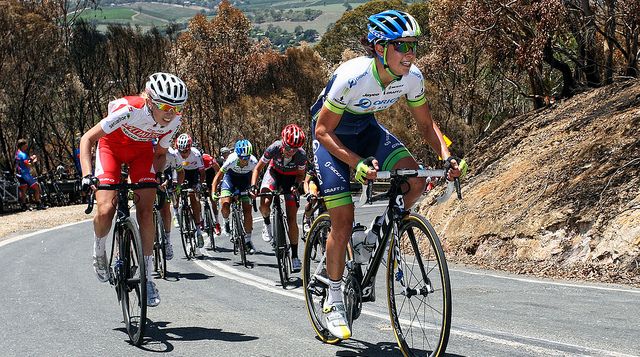 We will talk about such a large-scale ascent, as if you are going to Elbrus or the seven-thousander. How can you save energy and make this hard work easier?
We will talk about such a large-scale ascent, as if you are going to Elbrus or the seven-thousander. How can you save energy and make this hard work easier?
The first thing you can do is work with sticks. In order for the sticks to help and not interfere, they need to be properly adjusted, the length adjusted correctly. When walking with sticks, the length should not be the same as on cross-country skiing. The stick should be long enough to be comfortable to hold. If the stick is too long, during the day you will have to lift it up a lot of times and it's hard. This will make your shoulders tired.
The general rule is: the higher the pace and speed, the longer the stick. That is, if you have a heavy backpack and you go uphill, the stick will be short, and if you run some kind of skyrunning race, then it is clear that the sticks will be long.
Adjust the stick so that the forearm is parallel to the ground.
Now about how to hold the wand. If you use a lanyard, then the hand should be threaded from below and grab the stick along with the top of the lanyard.
But in fact, I only use a lanyard when I go up a steep hill with a heavy backpack. On the rise, I usually put my hands on the platforms of the handles and in this position I don’t need to somehow squeeze the stick at all, that is, my hands rest on their palms. I hold my hands wide enough, I open my chest. It helps me breathe.
Now about the setting of the legs. How to put your feet to make it easier to walk? Some, trying to climb the mountain faster, take large steps and this leads to a large expenditure of energy.
Regardless of whether the slope is steep or gentle, the difference in step height should be approximately the same. If we are comfortable moving with a step difference, say - 17 centimeters, we should also do this on a gentle slope and on a steep slope.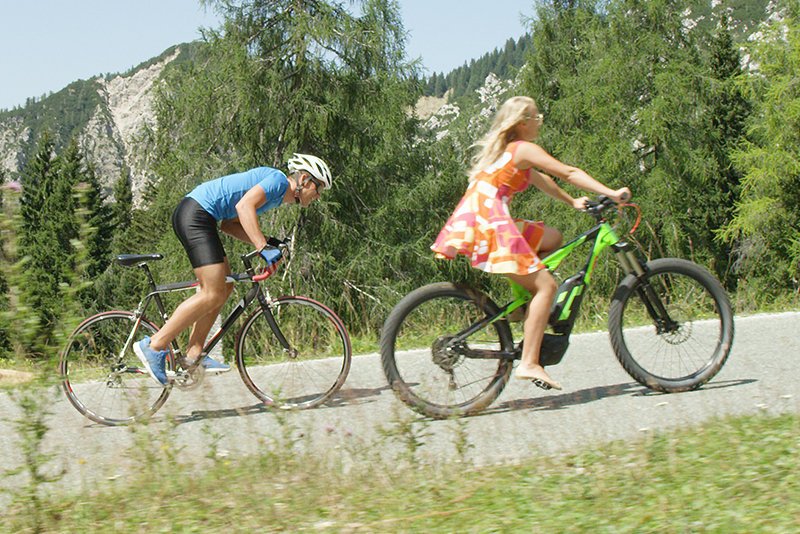 If we need to gain about a kilometer of drop, then regardless of whether the slope is steep or gentle, we will get approximately the same number of steps.
If we need to gain about a kilometer of drop, then regardless of whether the slope is steep or gentle, we will get approximately the same number of steps.
The steeper the mountain and the heavier the backpack - the smaller the steps, the greater your speed uphill - the steps will become larger.
And another important point is the actual setting of the feet. If we put the herringbone on the steep slope of the foot, then the outer half of the calf muscles will work for us all the time and they will get very tired. When moving with a ladder, we use the outer and inner half of the calf muscles. So, after walking a few meters, we can change sides. In fact, we change the load and all the muscles of the body: the muscles of the back, neck. Moving in this way, you can recover on the go.
The third point is breathing. It is very important to synchronize breathing with the movement of the legs and sticks. I always try to exhale on the load, at the moment when I stand on my foot. Sometimes I take a step or move my wand, not in order to move somewhere, but in order to take a breath. If it starts to turn out to synchronize breathing with walking, with the movement of the legs and sticks, then such a good, pleasant rhythm is usually set in which you can walk for a very long time
Sometimes I take a step or move my wand, not in order to move somewhere, but in order to take a breath. If it starts to turn out to synchronize breathing with walking, with the movement of the legs and sticks, then such a good, pleasant rhythm is usually set in which you can walk for a very long time
The fourth point is the pace of movement. I noticed that I always want to run as quickly as possible, keep the pace higher and then stand and relax. At high altitudes, where there is no possibility to fully recover, where the capacity of the lungs and heart is clearly not enough for this, it is very important not to bring yourself to a state of shortness of breath, to a state where a stop and recovery is necessary, because recovery at altitude practically does not occur.
I usually try to keep the pace of movement so that I can fully recover and be able to move without stopping for a very long time.
Let's summarize.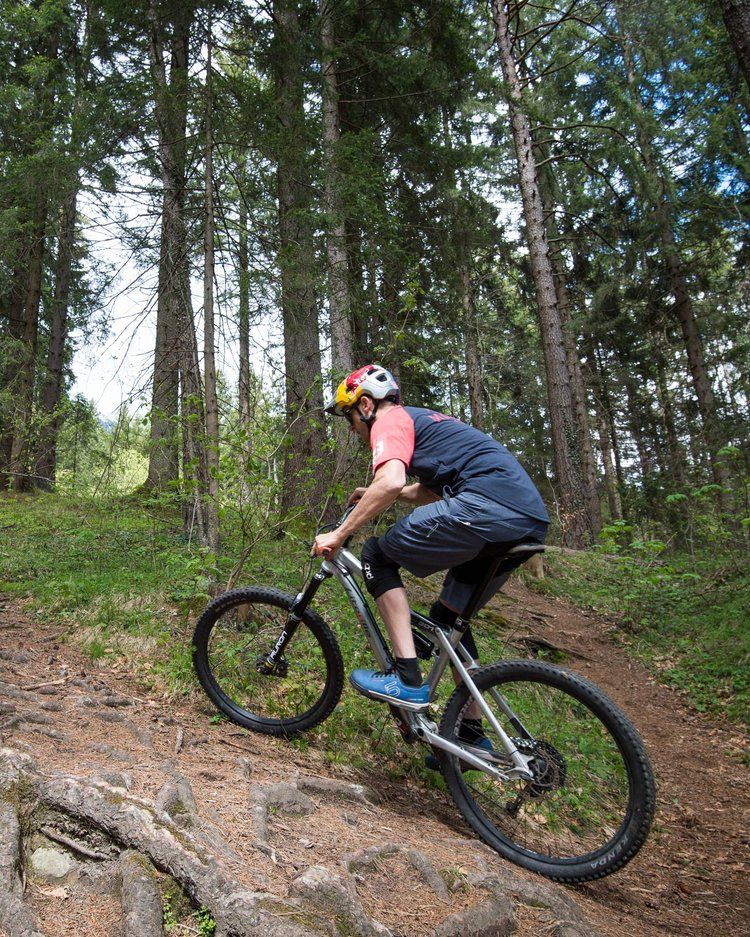 How can we cheat?
How can we cheat?
All the points that I have listed can also be trained, even if not everything works out the first time.
Go to the mountains with pleasure!
Vladimir Kondrashov
I love cycling. At every opportunity and even over very long distances.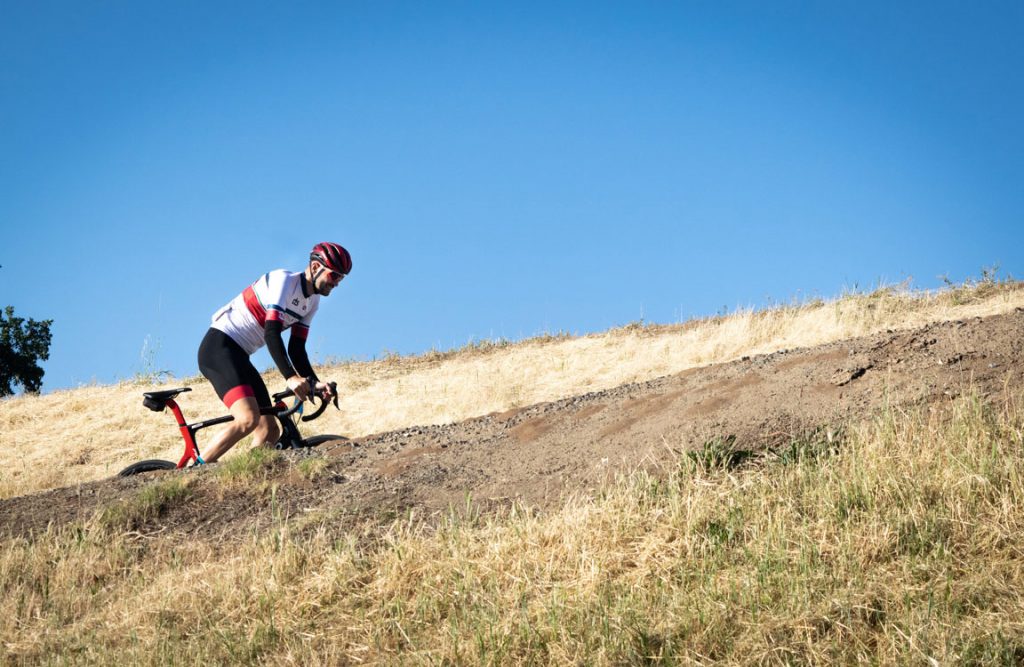 So one day, together with a friend, we drove more than 120 km in an evening. Now I have no problems with fatigue and poor stamina, but when I started cycling, I had a hard time. Obviously, it is not enough just to buy a bike, riding it also requires the right approach.
So one day, together with a friend, we drove more than 120 km in an evening. Now I have no problems with fatigue and poor stamina, but when I started cycling, I had a hard time. Obviously, it is not enough just to buy a bike, riding it also requires the right approach.
How to get tired less and drive more distance? Here is my recipe based on personal experience and professional advice.
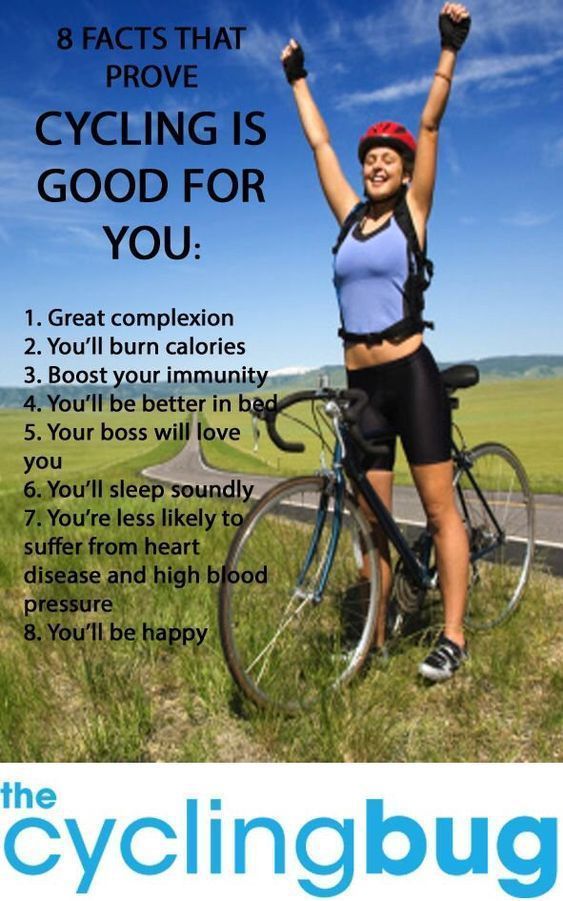 Experienced cyclists constantly ride at 2-3 speeds, usually the fastest.
Experienced cyclists constantly ride at 2-3 speeds, usually the fastest. 
All the tips above are not a panacea. It is really better to travel long and far with experience and fairly good physical training. If you are going on a long trip - correctly calculate your strength, first go somewhere closer. When planning a long trip, it is extremely important to remember that you will have to go back.